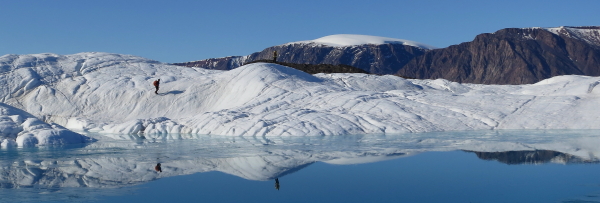
This was the second field season of our ice sheet and glacier research
project in northwestern Greenland. Focus of our field activity this
summer was Bowdoin Gletscher, one of the calving glaciers near
Qaanaaq, one of the northern most village in the world. Our goal is to
better understand the role of the ice dynamics and its interaction
with the ocean in the mass loss of Greenland ice sheet. We also
repeated mass balance and ice speed measurements on Qaanaaq Ice Cap,
where we began glaciological research activity in 2012.
On 4th July 2013, we flew in to Bowdoin Gletscher by a helicopter for a
2-week field campaign on the glacier. Based on a camp beside a river
running along the eastern margin of the glacier, we measured ice
speed, melt rate, and glacier surface and bed elevations. These data
will be utilized to investigate ice dynamics and thickness change of
this glacier. After the campaign, we made several boat trips from
Qaanaaq to the fjord of Bowdoin Gletscher for ocean measurements. We
used a sonar to measure the ocean bed geometry in front of the
glacier, which is very important for the stability of a calving
glacier. We also made preliminary measurements of ocean current and
temperature, to look for a possibility to expand ocean measurements in
the next field season.
On 29 July, we took a helicopter to survey snow accumulation at 1800
m a.s.l. on the Greenland ice sheet. Snow pit measurements and firn
core sampling were performed to quantify the accumulation rate in this
region. Working inland is not easy as we need a perfect weather for
helicopter operation, but it provides us valuable data to quantify the
ice mass change in Greenland.